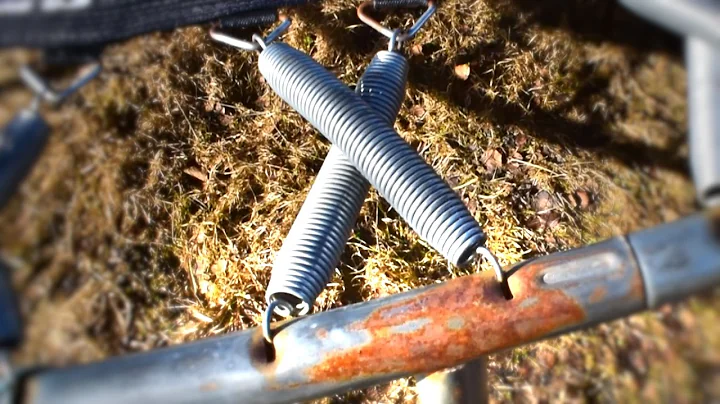Mastering the Art of Adjusting Four-Wheeled Walker Brakes
Table of Contents
- Introduction
- Importance of Adjusting the Brakes on a Four-Wheeled Walker
- Common Issues with Walker Brakes
- Tools Required for Adjusting Walker Brakes
- Step-by-Step Guide on Adjusting Walker Brakes
- Tips for Proper Maintenance of Walker Brakes
- When to Seek Professional Help
- Pros and Cons of Adjusting Walker Brakes Yourself
- Conclusion
🚶♂️ Adjusting the Brakes on a Four-Wheeled Walker: A Step-by-Step Guide 🛠️
Introduction
Having a four-wheeled walker is a wonderful device that provides excellent assistance to individuals with mobility issues. However, over time, the brakes on these walkers may loosen up, compromising their effectiveness. In this article, we will guide you through the process of adjusting the brakes on a four-wheeled walker so that you can ensure optimal safety and convenience.
Importance of Adjusting the Brakes on a Four-Wheeled Walker
The brakes on a four-wheeled walker are crucial for maintaining stability and preventing accidents. When the brakes are properly adjusted, they should lock when squeezed, preventing the walker from moving forward or backward. Additionally, the parking brake should engage when the walker is pushed down, allowing the user to sit on it without it rolling away or going downhill. However, if the brake adjustment goes out, it becomes imperative to readjust them for proper functionality.
Common Issues with Walker Brakes
There are two common issues that can arise with walker brakes - improper factory adjustment and cable stretching. Sometimes, walkers may be shipped with brakes not correctly adjusted, requiring manual adjustment. Additionally, due to regular use, the cables in the walker's brake system may stretch, necessitating readjustment after a certain period. Recognizing these issues and addressing them promptly is crucial to maintaining the effectiveness of the brakes.
Tools Required for Adjusting Walker Brakes
To adjust the brakes on a four-wheeled walker, you don't need any specialized tools. A pair of pliers, preferably needle-nose pliers, will be sufficient for the task. However, if you have an adjustable or crescent wrench, it can also be helpful. These tools are commonly found in most households and can serve the purpose of adjusting walker brakes effectively.
Step-by-Step Guide on Adjusting Walker Brakes
- Identify the mechanism responsible for adjusting the tightness of the cable, located near the walker's handles.
- Locate the knurled nut, a rough knob that allows for a better grip on the mechanism. It is essential to know that the knurled nut determines the tightness of the cable.
- Loosen the lock nut, which prevents the mechanism from being rotated freely. This will allow you to adjust the cable.
- Rotate the knurled nut counterclockwise to increase the distance between the knurled nut and the plastic handle. This tightens the cable.
- Keep adjusting the distance until you notice an improvement in the cable's tension. The ideal distance is when there are more threads visible between the knurled nut and the plastic handle.
- Once you achieve the desired tightness, tighten the lock nut to secure the adjustment in place.
- Repeat the same process for the mechanism at the lower end of the walker, if necessary.
Tips for Proper Maintenance of Walker Brakes
- Regularly check the tightness of the walker brake cables and readjust as needed.
- Lubricate the brake system periodically to ensure smooth and efficient operation.
- Keep an eye on any signs of wear or damage on the cables and replace them if required.
- Consider seeking professional assistance for complex adjustments or maintenance tasks.
- Follow the manufacturer's instructions for maintenance and care of your specific model of walker.
When to Seek Professional Help
While adjusting the brakes on a four-wheeled walker is a relatively simple process, there may be instances where professional help is warranted. If you encounter difficulties or if the brakes continue to malfunction after adjustment, it is advisable to reach out to a trained professional. They will have the expertise and knowledge to diagnose and fix any underlying issues with the brake system.
Pros and Cons of Adjusting Walker Brakes Yourself
There are several advantages to adjusting walker brakes yourself. It allows you to save time and money, as you won't have to rely on professional assistance for routine maintenance. Additionally, you can ensure that the brakes are adjusted to your specific needs and preferences.
However, there are a few drawbacks to consider as well. If you are unfamiliar with the process or lack the necessary tools, there is a risk of improper adjustment, which can compromise the brakes' effectiveness. In such cases, seeking professional help becomes essential to ensure optimal safety.
Conclusion
Adjusting the brakes on a four-wheeled walker is a simple yet vital maintenance task that every user should know. By following the step-by-step guide outlined in this article, you can ensure that your walker's brakes are properly adjusted for optimal performance. Remember to regularly check the tightness of the cables and seek professional help if needed. By maintaining the brakes on your walker, you can continue to enjoy the convenience and safety it provides.







